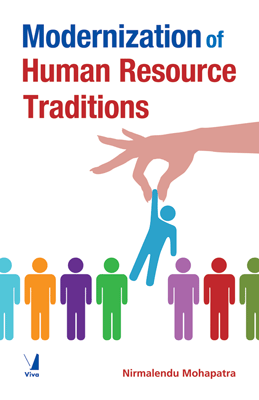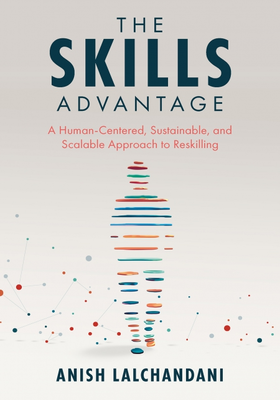Modernization of Human Resource Traditions
Modernization of Human Resource Traditions
₹715.50 ₹795.00 Save: ₹79.50 (10%)
Go to cartISBN: 9788130923031
Bind: Hardbound
Year: 2015
Pages: 216
Size: 5.5 x 8.5 Inch
Publisher: Viva Books Originals
Sales Territory: Worldwide
This book will be of value to HR managers of progressive organizations.
This book offers a sociological and historical perspective on the evolution of human resource management and how it is likely to change tomorrow's workplace. It captures the evolution of the human resource function from the welfare manager to the role of the cultural modernizer of today in a very compelling manner.
There are three main arguments that this book contains:
- It is not enough that HR be only a curious onlooker to developments triggered by IT; HR needs to assimilate the core of it.
- HR should be aware of cultural implications of what the modern technology is creating.
- Know your employees and think about them better with information technology.
Target Audience: This book emphasizes is the need for HR managers to be aware of the cultural implications of application of IT both at the social as well as the organizational level. This book will be of value to HR managers of progressive organizations.
Contents:
Chapter 1 : Tradition and Modernity
Words as Codes of Our Existence • Amazing Predominance of IT on Our Culture As It Works More on Our Mental Categories than on Physical Abilities • Modernization Is Vital to HR Function • Lack of Modernization Is Also Making HR Impoverished • Signs of New Generation HR Problems • Closeness to IT Will Enable the HR Functionary to Know the Employees Better • And How This Book Unfolds Itself
Chapter 2 : Differences and Similarities in HRM and IT
Four types of differences: • Freedom of Action in Human Actors Contrasts Rigid Technological Procedures • Constant Tendency to Go Beyond the Present Status Makes People a Different Entity Every Now and Then. • Every Person Has a Uniqueness of Being and Hence Prevents Any Comprehensive Classification or Generalization Needed for a Scientific Database. • Tendency to Examine All Actions to One's Inner Self Makes Human Being an Unpredictable Entity. • Four types of similarities: • Both Disciplines Encounter Subjects Which Have Infinite Parameters • Both HRM and IT Deal with the Human Intellect • Both Are Oriented to Handle Large Volume of Change • Both Subjects Are Marked by a Process of Convergence or Unification of Dissimilar Features • Human Side of Codd's Rules
Chapter 3 : Perspectives of HR Modernization
The Cultural Impact, and Knowing a Person Better • Components of Social Domain • Components of Modern Organizations • The Arena • The Human Development • Space in Which We Live and Operate • Our Sense of Time • Social Action • Typical Individual and His Personality • Groups in the Society • Family and Kinship • Process of Cooperation and Differentiation • Information and Communication • Socialization • Recreation and Leisure • Religion • Change Producing Behaviour • Organization Structure • Reference Group • Organization Goal • Job Design • Training and Learning
Chapter 4 : Knowing the Employee Better: The Designing and Development Process in HRMS
Capturing the Complete Employee • Re-engineering HR • Taste of New Technology • Encounter with a Multitasking Machine • A Collaboration Starts • A Day in the Life of an HR Executive • Preference for In-house Development of HRMS Database • Oracle Was Like a Divine Solution • Tables for HR Database • Columns in the Main Employee Table • The Programming Language • SQL as an Example of a Language • Developer as a Choice • Single Application instead of Three Copies • Consistency in All Reports • Parallel Working to Save Time • Centralization and Decentralization Together • Anybody Can Do the Work of a Specialist • No Need to Physically Send Any Report • Decision Support System: Breaking the Limit of Hierarchical Decision Making • Automatic Tracking: Events Announce Their Arrival by Themselves • Process Efficiency: Speed, Lesser Cycle Time • Accuracy, Automatic Updating • Convergence: Ensemble of Dissimilar Entities • Delegation • Generic Office System • Codification of Employee Data • The Data Entry Process ?
Chapter 5 : Knowing the Employee Better: The Transition Process in HRMS
Transition to HRMS as Change Management • History of Computer Applications in the Subject Organization • Creating a Climate for Change and a Sense of Urgency for HRMS • Core Implementation of Team HR, Finance and IT • HR Payroll Process: Data Transfer and Sharing • Collaboration within HR: Chasing a Shared Dream • The Computerized HR Office Dream • Enabling Actions for HRMS • The Role of Central HRMS Section • Stakeholders Communication • Short Term Benefits • Implementing and Sustaining the Change: Handling the Resistance • Trials and Deadlines • Eliminate Obstacles to Change: Data Verification • Procedure for Comprehensive Verification • Data Transfer System Involving HR and Finance after Comprehensive Verification • Infusing HRMS into the Work Culture
Chapter 6 : Modernizing the Traditions
What Previous Chapters Covered • A Personal Voice • Guide Pages for Application
Appendix: Appendix 1 : Joining and Induction of New Entrants • Appendix 2 : Sanction of LTC • Appendix 3 : Employee Separations • Appendix 4: Multipurpose Employee Information Form • Appendix 5 : Employee Discipline • Appendix 6 : Multiskill Training • Appendix 7 : Transfer of Employees • Appendix 8 : Promotions • Appendix 9 : Payroll and Salary Administration • Appendix 10 : Competency Mapping and Skill Inventory • Appendix 11 : ISO 9001 : 2008
About the Author:
Nirmalendu Mohapatra has been serving as an HR manager in SAIL (Steel Authority of India Ltd) for three decades. He holds a Master's in History from the University of Delhi followed by a doctoral degree in the same subject.







